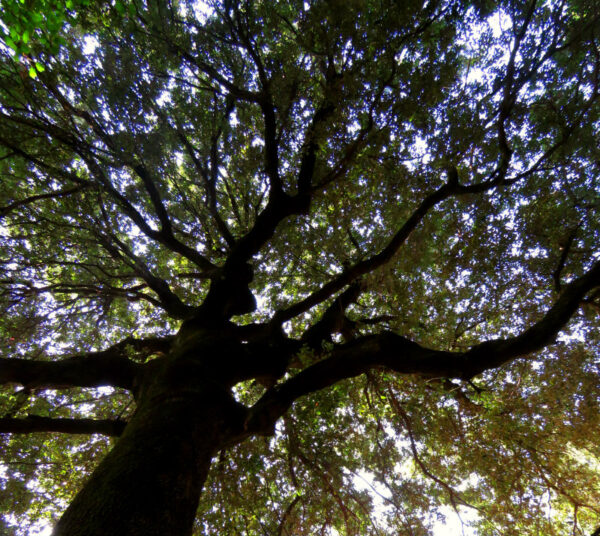If you want to experience an unusual itinerary on Mount Etna, following paths that almost no one takes, we invite you to follow us from the town of Mascali to the oak tree called Ilice della Caraffara. A somewhat long route to do on foot, a 3-hour pilgrimage which, however, anyone could also try. For the rest of us, the invitation is to go in stages. Between Mascali and the famous tree there is so much to see!
Departure point: Mascali
Mascali is a balcony overlooking two views: on one side the top of Etna and on the other the Ionian Sea. The town became sadly famous in the 1920s when, in November 1928, a low-altitude lateral eruption of Etna destroyed many neighbourhoods. But the roots of Mascali go back a long way in history.
Even if today the new town built on that lava does not prove it, in the Middle Ages Mascali was an important fiefdom, and in the 16th century it boasted the title of County. Today the most significant monuments of Mascali are its churches rebuilt in the 1930s and the remains of the early Christian chapel of Nunziatella. While mass tourism loves this place for its sandy beaches, such as Fondachello and Sant’Anna. However, from the center of Mascali, we head towards the volcano, leaving the sea behind us.
Nunziata
The hamlet of Nunziata di Mascali has become famous in Italy thanks to the singer-songwriter Franco Battiato who elevates it to the honors of his musical references in the song “Veni l’Autunnu” (sparunu i bummi, subra a Nunziata…). But in very ancient times this was an important place, especially for the first Christian communities of eastern Sicily.
Very recent discoveries have brought to light an architectural structure of the small church of Nunziatella dating back to the 5th century AD. The little church was already one of the oldest monuments in Sicily, as it dated back to the Normans era. But these further discoveries place it much earlier in time. And recently it has been possible to visit it on special days and events, so to admire traces of frescoes and ancient stones.
 Sant’Alfio and the Magazzeni church
Sant’Alfio and the Magazzeni church
Continuing towards Etna we go up from the village of Sant’Alfio, admiring its spectacular lava stone church overlooking the panorama of the coast. But Sant’Alfio is more famous for the monumental Castagno dei Cento Cavalli chestnut tree. It means “Chestnut of 100 Horses”, so called because it is so large that it can accommodate an entire army under its foliage.
In the territory of Sant’Alfio there are very fascinating mountain paths, which lead into the many chestnut woods typical of the area. Among these paths is the one that goes up to the small church called “dei Magazzeni”. Here a great miracle was worked: a lava flow directed towards the town suddenly diverted, saving houses and people! The view of the little church with the peak of Etna in the background is very suggestive!
Ilice della Caraffara
A short distance from the path that goes up to the Magazzeni church, continuing along Via Trisciala, there is a tourist farmhouse within whose borders you can finally admire this monumental oak tree. The Ilice della Caraffara is not among the largest trees on Etna (Ilice Carrinu and Trofa du Camperi are certainly larger), but it still has a circumference of 2.50 meters and makes a beautiful impression! Our little journey ends under the mighty branches of this century-old oak, and it’s time to relax by listening to the sounds of nature and the rumblings of Mount Etna. Which is everywhere here, even where you don’t see it. (PHOTOS BY GRAZIA MUSUMECI)